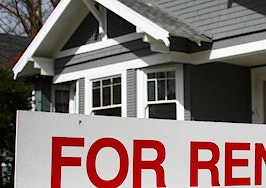- Millennials and other first-time homebuyers have more student debt and less wealth than their predecessors.
- There are some 2,406 homeownership programs available.
- Finding the right program for your buyers can mean the difference between closing the deal and losing the sale.
Some things never change. Down payments have been the No. 1 barrier to buying a home for first-time buyers as long as there have been mortgages.
Today’s millennial buyers are having more trouble assembling the cash for down payments than their older siblings and parents because they have higher levels of student loan debt and lower levels of wealth and personal income than their two immediate predecessor generations (Gen Xers and boomers) had at the same stage of their life cycles.
Mortgages with lower down payments can slice years off the time it takes to save and turn renters into buyers fast.
A Federal Reserve survey last year found that consumers’ willingness to pay for a new home increases by about 15 percent when households can make a down payment as low as 5 percent of the purchase price instead of having to put down 20 percent.
But for current — and often relatively less wealthy — renters, their willingness to pay for a new home on average increases by more than 40 percent.
Today’s buyers have a huge range of down payment options:
- The average down payment for conventional 30-year fixed rate purchase mortgages was 17.46 percent in the fourth quarter last year.
- When FHA and other federal, state and local government options are figured in, the national average down payment for all mortgages falls to about 14.8 percent of the purchase price.
- The average millennial buyer today is putting down an average of only 7 percent. While conventional loan borrowers are making an average down payment of $39,195 (17.36 percent of the December national median home price of $224,100), the average millennial is making a down payment of only $13,295 (7 percent times the average amount millennials paid for a house last year, $189,900).
A wealth of down payment options
Not since lenders offered no down and low down payment mortgages at the height of the boom — loans that contributed to the housing crash and to millions of foreclosures — have first-time homebuyers been able to buy a home for so little cash.
In 2004, the median down payment for first-time buyers was 3 percent, and 42 percent of them were financing homes with no down payment at all. Even today, low down payment and no down payment programs are not popular with some lenders and policy-makers.
They argue that owners with low or no down payments have less of an investment in the home (sometimes called “skin in the game”). That’s one reason a million or more owners who had little invested in their homes because they put nothing down voluntarily abandoned their homes to foreclosure when prices fell so far that they owed more on their homes than they were worth.
So what’s the millennials’ secret? The answer is three letters: FHA. Created to revive homeownership during the Great Depression, at the height of the housing boom in 2006, Federal Housing Authority accounted for less than 5 percent of the mortgage market. By 2010, its share exploded to nearly 25 percent of all originations. Now FHA, with its 3.5 percent down payment, is the loan of choice for millennials.
Like most low down payment programs, FHA requires mortgage insurance, including an upfront payment of 0.85 percent of the loan amount (lowered from 1.5 percent early last year). Lenders typically roll this upfront fee into the loan, so it does not increase the cash required to close.
However, FHA is not the only program available. Here are some options with lower down payments:
Fannie Mae
Last year, Fannie Mae launched a 3 percent down mortgage option. Fannie Mae has offered a 5 percent down payment option for more than 25 years. The new option is available only to first-time homebuyers who qualify, and it requires mortgage insurance. Here’s more information.
Freddie Mac
Freddie also launched a 3 percent down program last year called Home Possible Advantage that is not limited to first-time buyers but has income limits and requires borrowers to take Freddie’s homeownership education program. More information.
U.S. Department of Agriculture
The Rural Development Service of the Department of Agriculture finances 100 percent (no down payment) loans for single family homes in designated rural areas. It includes an income limits. USDA also subsidizes low and very low-income buyers with of payment assistance. Click here for more information.
Veterans Administration
Qualified veterans and their surviving spouses are eligible for no down payment loans with no mortgage insurance requirement. Here’s more information.
State and local housing finance agencies
Some 2,406 homeownership assistance programs available, and 84 percent currently have funds available to prospective homebuyers, according to Down Payment Resource. Most of the programs — 63 percent — are limited to first-time buyers.
First-time homebuyers are defined as a buyer who has not owned a home in the past three years. To find out what is available in your market, here’s more information.
Despite the help that’s available, misinformation and fluid economic conditions are making it harder for young buyers to put together the down payments they need to become homeowners.
Rising home prices are raising down payments, especially for scarce starter homes in hotter markets. Soaring rents are making it harder for young buyers living in rentals to save for down payments.
At the same time, studies show that more than one out of three prospective buyers is overestimating how much they actually need for a down payment. They badly need the help of real estate professionals who will help them through the process.
Left to their own devices, young buyers will become much older buyers before they ever cross the threshold of a home they can call their own.
Steve Cook is editor and co-publisher of Real Estate Economy Watch. Visit him on LinkedIn and Facebook.








